
| Hemiptera ~ Bugs, Cicadas, Aphids, Etc. |
|
This large order used to be divided into the Hemiptera (true bugs) and the Homoptera (everything else). It is still quite convenient to use those categories, as they are easy to distinguish. It also helps break a big group down into barely manageable portions.
All Hemipterans have a rostrum, or tube-like beak, through which they feed, and so are restricted to liquid diets. While true bugs feed on either plant or animal fluids, the other insects in this group feed only on plants, and include some major agricultural pests. The word "hemiptera" means half-wing, which describes the two-part upper wings of true bugs: they are thick close to the body and have a thinner part near the tip. The other insects in this group, such as cicadas and leaf hoppers, have four fairly equal long wings. Some species are wingless. Hemipterans develop through incomplete, or simple, metamorphosis; the nymphs look only somewhat like adults and most molt five times before reaching maturity. Nymphs and adults can often be found together. Size ranges from very tiny to some of our largest insects. This order is the most diverse in terms of forms. From scale insects to water bugs, there is very little that can be used to generalize about all the species. However, this diversity does help in identification, but only if one is already familiar with the possibilities.
|
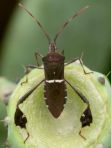 Coreidae [leaf-footed bugs] |
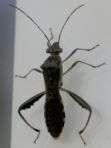 Alydidae [broad-headed bugs] |
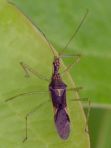 Reduviidae [assassin bugs] |
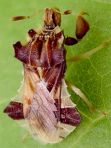 Phymatidae [ambush bugs] |
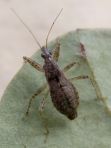 Nabidae [damsel bugs] |
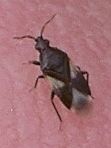 Anthocoridae [minute pirate bugs] |
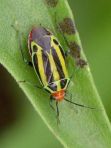 Miridae [plant bugs] |
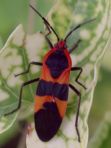 Lygaeidae [seed bugs] |
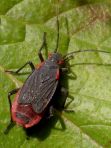 Rhopalidae [scentless plant bugs] |
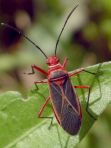 Pyrrhocoridae [red bugs] |
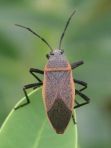 Largidae [largid bugs] |
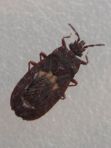 Aradidae [flat bugs] |
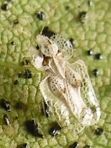 Tingidae [lace bugs] |
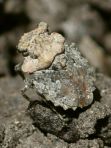 Gelastocoridae [toad bugs] |
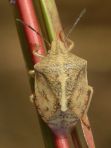 Pentatomidae [stink bugs] |
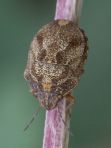 Scutelleridae [shield bugs] |
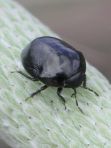 Thyreocoridae [ebony bugs] |
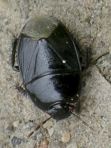 Cydnidae [burrowing bugs] |
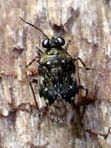 Saldidae [shore bugs] |
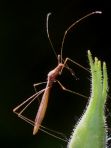 Berytidae [stilt bugs] |
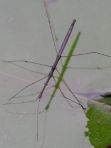 Hydrometridae [water measurers] |
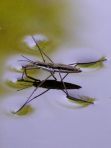 Gerridae [water striders] |
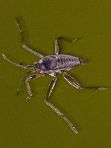 Veliidae [small water striders] |
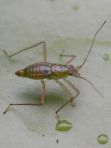 Mesoveliidae [water treaders] |
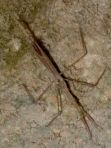 Nepidae [water scorpions] |
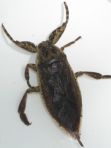 Belostomatidae [giant water bugs] |
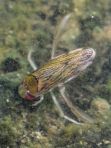 Corixidae [water boatmen] |
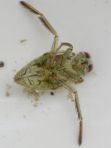 Notonectidae [backswimmers] |
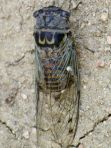 Cicadidae [cicadas] |
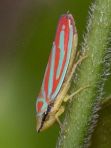 Cicadellidae [leafhoppers] |
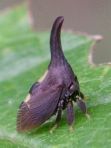 Membracidae [treehoppers] |
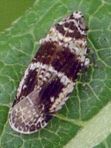 Achilidae [planthoppers] |
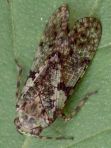 Fulgoridae [fulgorids] |
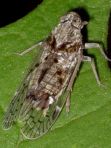 Cixiidae [planthoppers] |
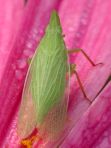 Dictyopharidae [planthoppers] |
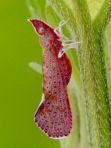 Derbidae [planthoppers] |
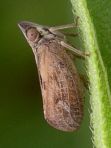 Issidae [planthoppers] |
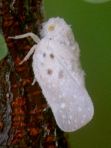 Flatidae [flatids] |
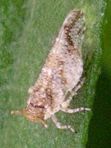 Delphacidae [delphacids] |
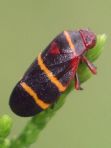 Cercopidae [spittlebugs] |
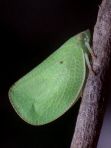 Acanaloniidae [planthoppers] |
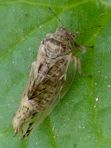 Psyllidae [psyllids] |
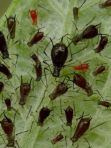 Aphididae [aphids] |
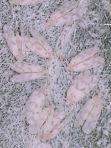 Aleyrodidae [whiteflies] |
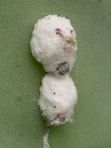 Dactylopiidae [cochineal bugs] |
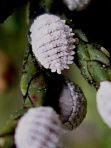 Pseudococcidae [mealybugs] |
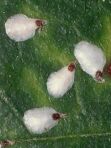 Diaspididae [armored scales] |
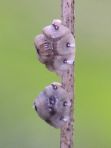 Coccidae [tortoise scales] |
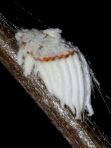 Margarodidae [ground pearls] |
![]()